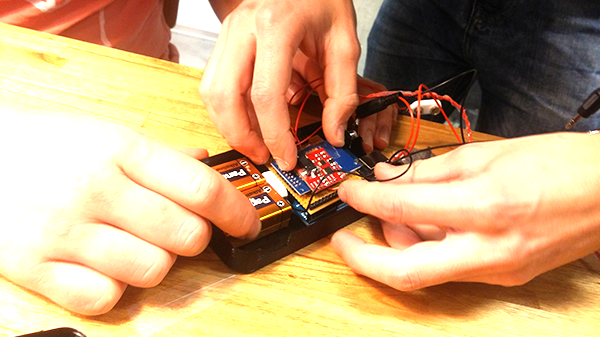Elective
Making Sense of Sensors (grade 8)




Reflection
During my study, the choice of the right
sensor has always been a struggle. A
lot of time was lost in multiple projects
since we tried to work with sensors that
wouldn’t work in the first place. Having
this experience I thought it was time to
get some more broader knowledge in
this area. Another reason was that in
my last project, I got feedback that the
technology used in the project was not
on the expected level. Also with my new
project, a complex sensor system was
probably needed since it involve AI of
the product. Learning to “make sense”
of all these sensors seemed necessary to
implement in my current Final Bachelor
project.
What I would like to get out of the
elective is to better understand the
sensor’s data and be able to create an
appropriate system of sensors. Focus is
here in how I can combine the sensors
within a system, since this can become
quite complex within my project. Also
I would like to understand better how
to calibrate sensors, so useful data can
be extracted in order for product to
interact in the expected way. After the
assignment I would like to be better in
choosing the right sensor so no time loss
is made here within projects.
The elective consisted of the lectures,
which where all attended and a group
assignment. The lectures explained the
basic about how sensors work, how to
select the right sensors, how to create
a sensor system based on the action
or reaction that you would like to
measure and how to use these sensors
in the correct way. The lectures gave
the insights in the common pitch falls
and showed to correct way of working
with sensors. The main elements that
where valuable for me were how to
determine the interval in the time
domain and what was ethically allowed
and prohibited when working with
users, sensors and data. The statistics
theory of the lectures where the most
interesting for me, since it was a
completely new subject. It helped to on
a more academic level analyse data and
underpin conclusion based on the data.
Also analysing the data could help show
flaws of the sensor and see if you are
measuring what want to measure.
Within the team I focused on the heart
rate sensor the most. Since it was an
of the shelf sensor that was made for
Arduino, not much problems where
expected. The opposite was true
unfortunately and it required some in
depth search in the provided code by
the manufacturer. Analysing the raw
data of the sensor was harder but didn’t
throw away data points and thus create
a more realistic image. The sensor
worked fine in a controlled situation
where the user would move, but since
our experiment required intense physical
movement, most of the data was noise.
Luckily this was not a problem for
elective since it was now interesting to
determine why the sensor didn’t work
in an appropriate way. Using Matlab to
analyse data was a first for me, but it is
considered a basic skill in the academic
field. I understand the basic way of how
Matlab works I enjoyed experimenting
with codes to see if it would give
relevant graphs that could lead to
better conclusions. Further I helped
with the analysis of the thermistor that
contrary to the heart rate sensor where
almost perfect. This showed both sides
of the story and by this use almost all
the provided theory in practice. For
the sensor system, I designed and 3D
printed the case in order to create a
compact system. Of course I also helped
in the process of picking the right sensor
and the user testing.
After the assignment I have a better
understanding of sensors in general but
more importantly for me, how to analyse
data in an academic way. I consider this
elective as one of the more valuable
ones, since statistics is a domain that
has never been taught within the study.
Being able to use Matlab will come in
handy in the future for sure and I’m
curious about the possibilities it has to
offer. Now I have more confidence in
how I can “make sense of sensors” and
create more stable sensor systems. A
challenge in the future would be to write
code that real-time filters the data so
actuators will react but I’m sure that the
new gained skills and knowledge of this
elective offers the base to do this.
